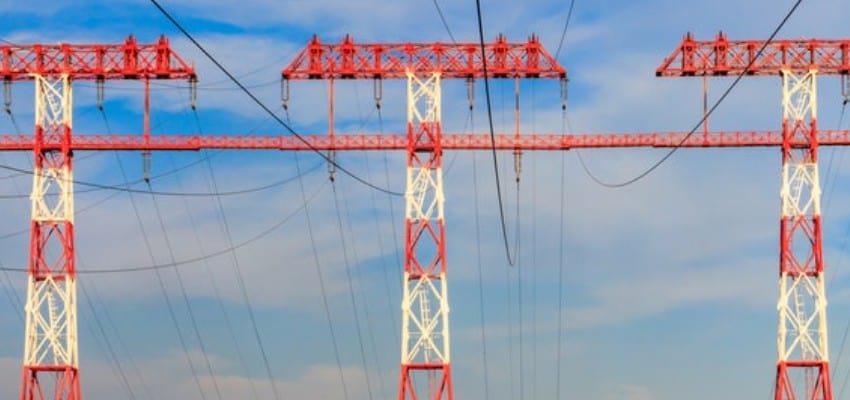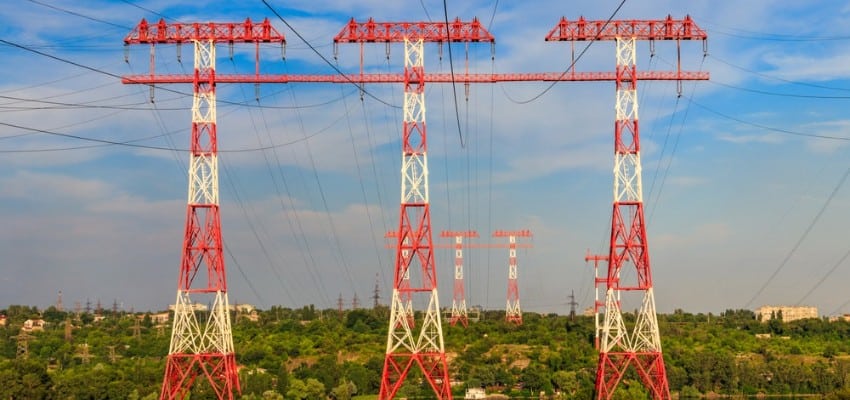|
|
Content Assessment: Off The Grid? Ukraine Conflict Assessments in Maps (August 23 - 27, 2022)
Information - 94%
Insight - 95%
Relevance - 94%
Objectivity - 96%
Authority - 95%
95%
Excellent
A short percentage-based assessment of the qualitative benefit of the post highlighting the recent Ukraine conflict assessments in maps from the Institute for the Study of War.
Editor’s Note: One of the most accurate and detailed sources for ongoing updates on the Ukraine crisis is the Ukraine Conflict Update from the Institute for the Study of War. The Institute for the Study of War (ISW) is a 501(c)(3) organization and produces strictly non-partisan, non-ideological, fact-based research. ISW seeks to promote an informed understanding of war and military affairs through comprehensive, independent, and accessible open-source research and analysis. ISW’s research is made available to the general public, military practitioners, policymakers, and media members. Providing a daily synthesis of key events related to the Russian aggression against Ukraine, ISW updates may benefit cybersecurity, information governance, and legal discovery professionals as they follow the business, information technology, and legal trends and trajectories impacted by and stemming from the current Ukraine conflict.
Assessment and Maps*
Ukraine Conflict Assessments – An Overview in Maps
- Institute for the Study of War (ISW), Russia Team
- Critical Threats Project (CTP), American Enterprise Institute
General Assessment Background Info
- ISW systematically publishes Russian campaign assessments that include maps highlighting the assessed control of terrain in Ukraine and main Russian maneuver axes.
- These maps augment daily synthetic products that cover key events related to renewed Russian aggression against Ukraine.
The Russian Offensive Campaign Assessments
- August 27, 2022
- Karolina Hird, Grace Mappes, George Barros, and Frederick W. Kagan
Key Development
- Ukraine’s Southern Operational Command stated that a 10-person Russian sabotage and reconnaissance group attempted assault operations in Kherson Oblast on August 27, suggesting that Russian offensive capabilities in Kherson Oblast have degraded even further.
Key Takeaways
- Volunteer battalions that comprise Russia’s 3rd Army Corps are likely being prepared to attempt offensive combined arms operations but will likely lack sufficient combat power to make a material difference on the battlefield.
- Ukraine’s Southern Operational Command stated that a 10-person Russian sabotage and reconnaissance group attempted assault operations in Kherson Oblast, indicating that Russian offensive capabilities in Kherson Oblast have degraded further.
- Russian forces conducted a limited ground attack north of Kharkiv City.
- Russian forces conducted limited ground attacks southwest of Izyum, northeast of Siversk, northeast and south of Bakhmut, and west and southwest of Donetsk City.
- Ukrainian forces targeted Russian airborne command-and-control elements in western Kherson Oblast.
- Russian and Ukrainian sources traded accusations of shelling the Zaporizhzhia Nuclear Power Plant.
- Russian military leadership may be shifting to a new phase of mobilization in central Russia and have likely exhausted pools of potential recruits in more peripheral and disenfranchised regions.
- Russian authorities are intensifying law enforcement operations in occupied areas.
- August 26, 2022
- By Karolina Hird, Grace Mappes, Angela Howard, George Barros, and Mason Clark
Key Development
- The International Atomic Energy Agency (IAEA) stated that unspecified actors (but almost certainly Russian forces) reconnected part of the Zaporizhzhia Nuclear Power Plant (ZNPP) to the Ukrainian power grid on August 26.
Key Takeaways
- The International Atomic Energy Agency (IAEA) stated that elements of the Zaporizhzhia Nuclear Power Plant (ZNPP) reconnected to the Ukrainian power grid on August 26.
- Russian occupation authorities remain unlikely to successfully conduct sham referenda to annex Ukrainian territory into the Russian Federation by early September, despite reports of advancing preparations for referenda.
- Russian forces conducted limited ground attacks southwest of Izyum, northeast and south of Bakhmut, and on the northwestern outskirts of Donetsk City.
- Ukrainian forces continued targeting Russian ground lines of communication (GLOCS) and military infrastructure in Kherson Oblast which support operations on the west bank of the Dnipro River.
- Russian federal subjects (regions) continued additional recruitment drives for volunteer battalions, which continue to deploy to Ukraine.
- Ukrainian partisans and internal division continue to pose threats to Russian control of occupied territories.
- August 25, 2022
- By Karolina Hird, Layne Philipson, George Barros, and Frederick W. Kagan
Key Development
- Russian President Vladimir Putin’s August 25 decree to increase the size of the Russian military starting in January 2023 is unlikely to generate significant combat power in the near future and indicates that Putin is unlikely to order a mass mobilization soon.
Key Takeaways
- Russian forces conducted limited ground attacks northwest and northeast of Slovyansk, northeast and south of Bakhmut, and northwest of Donetsk City.
- Russian forces conducted a limited ground attack in northwestern Kharkiv Oblast.
- Russian forces conducted limited ground attacks in northwestern Kherson Oblast.
- Ukrainian forces continued to target Russian military assets and ground lines of communication (GLOCs) in Kherson Oblast.
- Russian federal subjects (regions) are continuing recruitment efforts for volunteer battalions, which are continuing to deploy to training grounds in Russia and to Ukraine.
- Russian occupation administrators are continuing to take measures to mitigate challenges to their authority and facilitate the economic and educational integration of occupied territories into the Russian system.
- August 24, 2022
- By Karolina Hird, Kateryna Stepanenko, George Barros, and Frederick W. Kagan
Key Development
- Recent Ukrainian strikes on Russian military and transportation infrastructure in Crimea and Kherson Oblast are likely reducing Russian confidence in the security of Russian rear areas.
Key Takeaways
- Russian forces have lost an area larger than Denmark since the high-water mark of their invasion of Ukraine in mid-March and gained an area the size of Andorra (one percent of what they have lost) in the last 39 days.
- Russian Defense Minister Sergey Shoigu reaffirmed that Russia has not changed its maximalist strategic war aims.
- Russian forces conducted limited ground attacks southwest and southeast of Izyum, northeast and south of Bakhmut, and west and southwest of Donetsk City.
- Russian forces conducted a limited ground attack in northwestern Kherson Oblast.
- Ukrainian forces continued to target Russian military assets and ground lines of communication (GLOCs) in Kherson and Zaporizhia Oblasts.
- Russian occupation authorities continue to face partisan and internal challenges to the administration of occupation agendas.
- Russian proxy leadership is continuing efforts to oversee the legislative and administrative integration of occupied territories into Russian systems.
- August 23, 2022
- By Karolina Hird, Kateryna Stepanenko, Grace Mappes, George Barros, and Frederick W. Kagan
Key Development
- Russian government sources confirmed that Russia is bringing Ukrainian children to Russia and having Russian families adopt them.
Key Takeaways
- Russian government sources confirmed that Russian authorities are bringing Ukrainian children to Russia and having Russian families adopt them. The forcible transfer of children from one group to another “with intent to destroy, in whole or in part, a national, ethnical, racial or religious group” is a violation of the Convention on the Prevention and Punishment of the Crime of Genocide.
- Russian authorities are deploying security forces to Luhansk Oblast likely in response to waning support for the war and growing unwillingness to fight among Luhansk residents. This deployment diverts these forces from operations elsewhere in Ukraine, likely contributing to the broader Russian failure to translate limited tactical gains into operational successes.
- Russian officials may have conducted a false flag event in Donetsk City to justify attacks against Ukrainian government buildings on Ukrainian Independence Day.
- Russian forces conducted limited ground attacks northeast and south of Bakhmut, on the northwestern outskirts of Donetsk City, and southwest of Donetsk City.
- Russian forces made limited gains east of Mykolaiv City and in northwestern Kherson Oblast.
- Ukrainian forces continued to strike Russian military assets and ground lines of communication (GLOCs) in Kherson Oblast.
- Russian federal subjects (regions) are continuing to increase one-time enlistment bonuses for recruits, and are likely recruiting personnel with no prior military experience for specialist positions.
- Ukrainian partisan activity continues to disrupt Russian occupation activities.
We do not report in detail on Russian war crimes because those activities are well-covered in Western media and do not directly affect the military operations we are assessing and forecasting. We will continue to evaluate and report on the effects of these criminal activities on the Ukrainian military and population and specifically on combat in Ukrainian urban areas. We utterly condemn these Russian violations of the laws of armed conflict, Geneva Conventions, and humanity even though we do not describe them in these reports.
Chronology of Maps from August 23-27 2022 – Mouseover to Scroll
Ukraine Conflict Maps - 082322-082722See the Institute for the Study of War Interactive Map of the Russian Invasion
Read the latest Ukraine Conflict updates from the Institute for the Study of War
* Shared with direct express permission from the Institute for the Study of War (ISW).
About the Institute for the Study of War Research Methodology
ISW’s research methodology relies on both primary and secondary sources, enabling researchers to develop a comprehensive understanding of the situation on the ground. In order to analyze military and political developments in any given area, ISW’s research analysts must wholly understand the systems of enemy and friendly forces. They must also understand the population demographics, physical terrain, politics, and history of that area. This lays the analytical foundation for understanding the reasons for particular developments and fulfilling their assigned research objectives. ISW analysts also spend time in places like Iraq, Afghanistan, and elsewhere in order to gain a better understanding of the security and political situation and to evaluate the implementation of current strategies and policies. Our researchers compile data and analyze trends, producing a granular analysis of developments in areas of research, producing an accurate, high-resolution, timely, and thorough picture of the situation. ISW’s research methodology guarantees its success and commitment to improving the nation’s ability to execute military operations, achieve strategic objectives, and respond to emerging problems that may require the use of American military power.
About the Institute for the Study of War
The Institute for the Study of War advances an informed understanding of military affairs through reliable research, trusted analysis, and innovative education. We are committed to improving the nation’s ability to execute military operations and respond to emerging threats in order to achieve U.S. strategic objectives. ISW is a non-partisan, non-profit, public policy research organization.
Learn more, get involved, and contribute today.
Additional Reading
- [Annual Update] International Cyber Law in Practice: Interactive Toolkit
- Data Embassies: Sovereignty, Security, and Continuity for Nation-States
Source: ComplexDiscovery


























